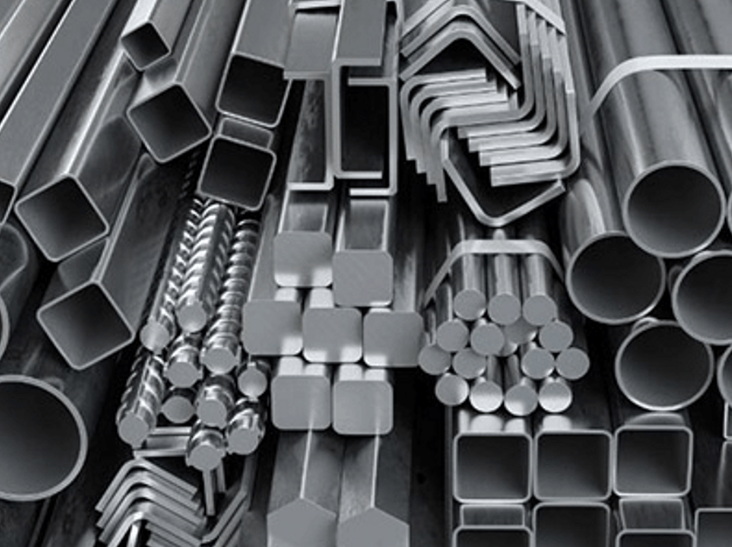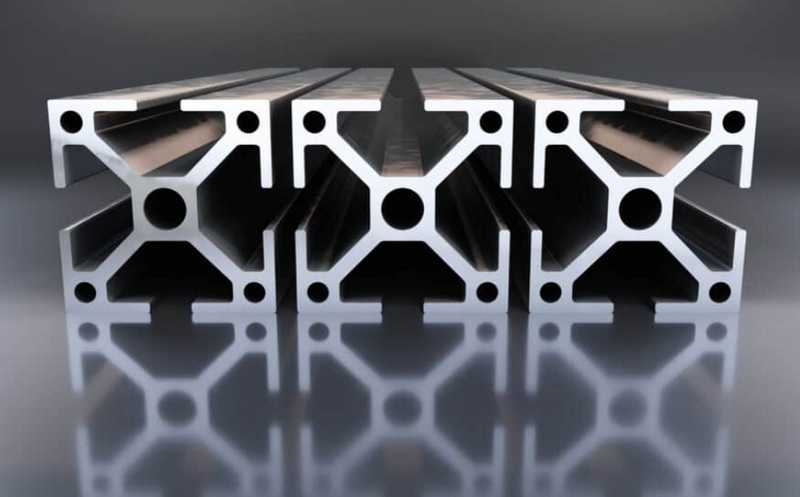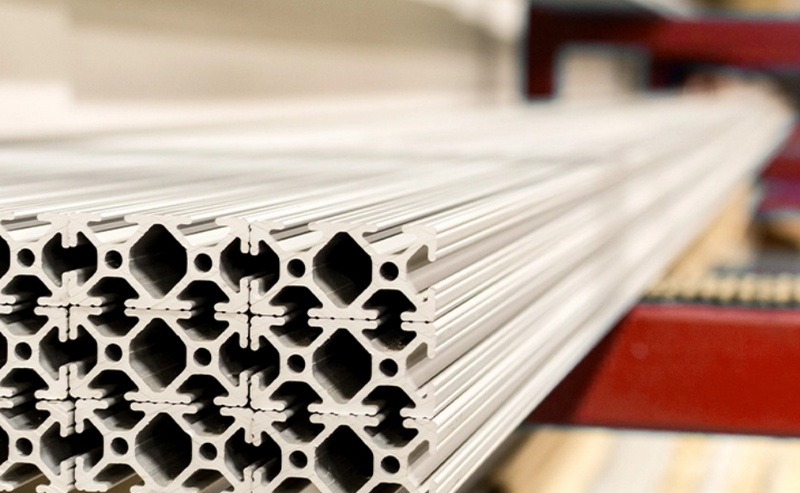Content Menu
● Understanding Aluminum Extrusion Grades
● Key Aluminum Extrusion Grades
>> 1. 6061 Aluminum
>> 2. 6063 Aluminum
>> 3. 3003 Aluminum
>> 4. 5052 Aluminum
>> 5. 7075 Aluminum
● Factors to Consider When Choosing an Aluminum Grade
● The Aluminum Extrusion Process
● Common Applications of Aluminum Extrusions
● Advantages of Using Aluminum Extrusions
● Challenges Associated with Aluminum Extrusions
● Future Trends in Aluminum Extrusion
● Conclusion
● FAQ
>> 1. What are the most common aluminum extrusion grades?
>> 2. How do I choose the right aluminum grade for my project?
>> 3. What industries use aluminum extrusions?
>> 4. Can all aluminum grades be welded?
>> 5. What advantages do aluminum extrusions offer over other materials?
● Citations:
Aluminum extrusion is a manufacturing process that shapes aluminum alloys into specific profiles. This process is highly versatile and allows for the creation of complex shapes that can be used in various applications. Understanding the different aluminum extrusion grades and their uses is essential for selecting the right material for your project. This article will explore the various aluminum extrusion grades, their properties, and typical applications.

Understanding Aluminum Extrusion Grades
Aluminum grades are categorized based on their alloying elements, which significantly influence their properties. The most common aluminum extrusion grades fall into several series:
- 1000 Series: Pure aluminum with a minimum of 99% aluminum content, known for excellent corrosion resistance and high thermal and electrical conductivity.
- 2000 Series: Copper is the primary alloying element, providing high strength but lower corrosion resistance. These alloys are often used in aerospace applications.
- 3000 Series: Manganese is the main alloying element, offering moderate strength and good corrosion resistance. Commonly used in chemical equipment and food processing.
- 4000 Series: Silicon is the primary alloying element, primarily used for welding wires and automotive applications due to its low expansion properties.
- 5000 Series: Magnesium is the main alloying element, known for excellent corrosion resistance, especially in marine environments. These alloys are often used in shipbuilding and automotive applications.
- 6000 Series: Composed of magnesium and silicon, this series is very popular for extrusion due to its good mechanical properties and corrosion resistance. It is widely used in structural applications.
- 7000 Series: Zinc is the primary alloying element, providing very high strength but lower corrosion resistance. These alloys are typically used in aerospace and sporting equipment.
Key Aluminum Extrusion Grades
1. 6061 Aluminum
6061 aluminum is one of the most widely used aluminum alloys due to its excellent mechanical properties and versatility. It offers good corrosion resistance, weldability, and machinability.
Applications:
- Structural components
- Automotive parts
- Marine structures
- Aerospace applications
2. 6063 Aluminum
Known as architectural aluminum, 6063 offers superior extrudability and a smooth finish. It has good corrosion resistance and is often used in architectural applications.
Applications:
- Window frames
- Door frames
- Handrails
- Furniture
3. 3003 Aluminum
3003 aluminum is a general-purpose alloy that contains manganese as its main alloying element. It provides good workability and moderate strength.
Applications:
- Cooking utensils
- Chemical equipment
- Storage tanks
4. 5052 Aluminum
5052 aluminum is known for its excellent corrosion resistance and weldability. It has good workability and moderate strength.
Applications:
- Marine environments
- Fuel tanks
- Pressure vessels
5. 7075 Aluminum
7075 aluminum is one of the strongest aluminum alloys available, primarily used in aerospace applications due to its high strength-to-weight ratio.
Applications:
- Aircraft structures
- Military vehicles
- High-stress components
Factors to Consider When Choosing an Aluminum Grade
Selecting the right aluminum extrusion grade depends on several factors:
- Strength Requirements: Consider the load-bearing capacity required for your application.
- Corrosion Resistance: Determine if the material will be exposed to harsh environments or chemicals.
- Weldability: Assess whether welding will be necessary during fabrication.
- Machinability: Some grades are easier to machine than others; choose accordingly based on your manufacturing process.
- Aesthetic Qualities: If appearance matters, consider how well the grade finishes or anodizes.

The Aluminum Extrusion Process
The aluminum extrusion process involves several steps:
1. Billet Preparation: A solid cylindrical piece of aluminum (billet) is heated to a specific temperature to make it malleable.
2. Extrusion: The heated billet is placed into a press where it is forced through a die, creating the desired profile shape.
3. Cooling: The extruded shape is cooled either naturally or through water quenching to maintain its form.
4. Cutting and Finishing: The extruded profiles are cut to length and may undergo additional finishing processes such as anodizing or painting.
Common Applications of Aluminum Extrusions
Aluminum extrusions are utilized across various industries due to their lightweight, durability, and versatility. Some common applications include:
- Construction: Used in window frames, curtain walls, roofing systems, and structural components that require strength without excessive weight.
- Transportation: Employed in vehicle chassis, trailers, railings, and other structural elements where weight reduction contributes to fuel efficiency.
- Electronics: Used for heat sinks that dissipate heat from electronic components effectively while maintaining a lightweight profile.
- Furniture Design: Applied in modern furniture designs for both aesthetics and functionality; extruded aluminum can be shaped into elegant forms that enhance design appeal.
- Marine Applications: Due to its excellent corrosion resistance, aluminum extrusions are frequently used in boat manufacturing for hulls, decks, and railings.
Advantages of Using Aluminum Extrusions
Aluminum extrusions offer numerous advantages over other materials:
- Lightweight Nature: Aluminum has a low density compared to other metals like steel, making it ideal for applications where weight savings are critical.
- Corrosion Resistance: Many aluminum grades exhibit excellent resistance to corrosion, particularly when anodized or coated.
- Versatility in Design: The extrusion process allows for complex shapes that can meet specific design requirements without compromising material integrity.
- Recyclability: Aluminum can be recycled without losing its properties, making it an environmentally friendly choice.
Challenges Associated with Aluminum Extrusions
While there are many benefits to using aluminum extrusions, there are also challenges:
- Cost Considerations: Depending on the grade and complexity of the extrusion process, costs can be higher than other materials like plastic or steel.
- Thermal Conductivity Issues: Although aluminum conducts heat well, certain applications may require additional insulation or treatment to manage thermal properties effectively.
Future Trends in Aluminum Extrusion
As industries continue to innovate, several trends are emerging in the field of aluminum extrusion:
1. Sustainability Initiatives: With increasing environmental awareness, manufacturers are focusing on sustainable practices such as recycling scrap aluminum during production processes.
2. Advanced Alloys Development: Research into new alloy compositions aims to enhance performance characteristics such as strength-to-weight ratios while maintaining workability.
3. Integration with Smart Technologies: The incorporation of smart technologies into products made from aluminum extrusions (like sensors in automotive parts) offers new possibilities for functionality.
4. Customization Options Expansion: As demand grows for tailored solutions across industries, manufacturers are investing in advanced extrusion techniques that allow for greater customization of profiles.
5. Increased Use in Electric Vehicles (EVs): The automotive industry's shift towards electric vehicles presents opportunities for lightweight materials like aluminum to play a significant role in vehicle design and efficiency improvements.
Conclusion
Understanding the different aluminum extrusion grades is crucial for selecting the appropriate material for your project. Each grade offers unique properties that cater to specific applications across various industries. Whether you need lightweight components for aerospace or durable structures for construction, there's an aluminum grade designed to meet those needs effectively. As technology advances and sustainability becomes increasingly important, the future of aluminum extrusion looks promising with continued innovation driving new applications and enhancements in material performance.

FAQ
1. What are the most common aluminum extrusion grades?
The most common grades include 6061, 6063, 3003, 5052, and 7075, each serving different purposes based on their properties.
2. How do I choose the right aluminum grade for my project?
Consider factors such as strength requirements, corrosion resistance, weldability, machinability, and aesthetic qualities when selecting an aluminum grade.
3. What industries use aluminum extrusions?
Aluminum extrusions are widely used in construction, transportation, electronics, marine applications, furniture design, and aerospace industries.
4. Can all aluminum grades be welded?
Not all grades are suitable for welding; it's essential to check the specific alloy's characteristics regarding weldability before proceeding with fabrication.
5. What advantages do aluminum extrusions offer over other materials?
Aluminum extrusions provide a lightweight solution with excellent strength-to-weight ratios, corrosion resistance, versatility in design, and ease of fabrication compared to other materials like steel or plastic.
Citations:
[1] https://www.thinmetalsales.com/blog/different-grades-of-aluminum-and-their-applications/
[2] https://tri-stateal.com/blog/extruded-aluminum-alloys-selection/
[3] https://www.1stchoicemetals.co.uk/aluminium/grades-guide/
[4] https://www.sunrise-metal.com/aluminum-extrusion-alloys/
[5] https://www.youtube.com/watch?v=ExR50gS6rYQ
[6] https://www.youtube.com/watch?v=iiGlq7408ME
[7] https://www.weerg.com/guides/aluminium-alloy-grades-and-applications
[8] https://aec.org/alloys-tempers
[9] https://www.youtube.com/watch?v=IcVu7G71N50
[10] https://www.youtube.com/watch?v=baM5hNnBcT8






















